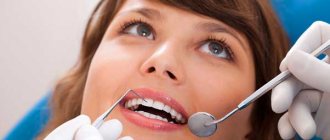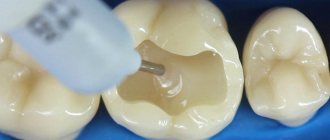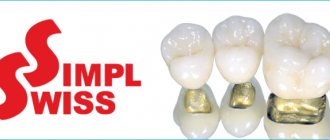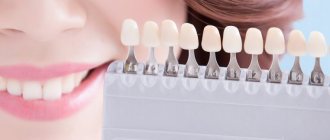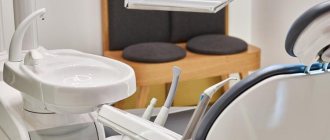Dental diseases of the teeth are a group of pathologies that affect the enamel, gums, oral cavity, as well as the jaw and chewing muscles. Dentists call them harmless to humans, since the mortality rate is negligible. However, it is these disorders that determine the patient’s overall well-being: they affect self-esteem and an internal sense of comfort.
Experts recommend not to let the situation get worse and to closely monitor the condition of your teeth. Due attention allows you to avoid serious complications, as well as promptly identify defects that need correction.
In this article we examine in detail the most common problems, as well as methods of treating them.
Basic terms in dentistry: names and causes of inflammatory diseases of the teeth and oral cavity
It plays a vital function in the digestion process: it is responsible for grinding food and influencing its subsequent breakdown by enzymes. In addition, there is a huge number of microorganisms that create natural microflora, but are considered opportunistic. This nuance determines the fact that any dental disorders progress extremely quickly.
Among the key factors in the occurrence of dental diseases are:
- poor hygiene;
- mechanical injuries and damage;
- chronic illnesses;
- metabolic disorders and abnormalities;
- the presence of thermal irritants in the body;
- bad environment;
- hereditary predisposition.
The branch of medicine that studies the emergence and development of pathologies is called etiology. It is partially correlated with diagnostic procedures, as it helps in determining pathogenesis.
Classification: types of main dental diseases of the teeth
Conventionally, all violations can be divided into two broad categories - those associated with damage to the enamel, and those caused by processes occurring in periodontal tissues. There is another classification principle - based on “carious” affiliation:
- with existing caries lesions;
- non-carious deviations.
The second option is considered the simplest and most convenient to treat if the problem is detected at an early stage. In addition, it is easier for patients to comply with prescriptions, which simplifies the process of rehabilitation measures.
Note that congenital and hereditary pathologies stand apart. They are formed in the womb and are very difficult to correct.
Periodontitis
If gingivitis is not treated, it can lead to the development of periodontitis . Periodontal inflammation means inflammation of not only the gums, but also the tissues that support the teeth. These include bone, gums, mucous membrane and dental ligament. Their defeat can lead to exposure of the roots of the tooth, its loosening and, as a result, loss. Periodontitis, like gingivitis, is accompanied by bleeding gums and bad breath; in addition, it is characterized by itching and pulsation in the gum tissue, and tooth mobility. As the process progresses, mobility increases, the necks of the teeth become exposed and become increasingly sensitive to temperature stimuli. Treatment of periodontitis requires a serious approach and is carried out using both conservative and surgical methods.
Developmental and eruption disorders
What are the different dangerous dental diseases? Perhaps the most serious problems are caused by congenital or hereditary causes. In these cases, the exacerbation does not begin due to pathogenic bacteria, pathogens or other factors. Such pathologies, as a rule, play a symptomatic role. They signal about malfunctions occurring in the body and force you to take immediate action.
Edentia
A pathological process accompanied by the loss of individual units or complete rows. In extremely severe stages, complete tooth loss occurs. The disease begins to develop during intrauterine development. The main factor is poor heredity or serious illnesses suffered by the mother while carrying the fetus. Due to jaw overload, even healthy teeth can become loose.
Superset
A disease in which excess elements appear in the oral cavity, which have an extremely negative effect on the state of the bite, and provokes additional speech and chewing problems. Dentists recommend removing such units, and the sooner the better.
Fusion and Merger
A rather rare deviation, expressed in the connection of tooth buds with dental cement. The main processes unfold during the formation of elements. Only 1% of people are prone to this disease. As a rule, the disease is diagnosed as part of a temporary dentition. In adulthood, pain is approximately 5-6 times less, so patients often do not suspect the presence of a problem until a visit to the dentist.
Spear-shaped teeth
A disease that affects crowns. It is considered infrequent - it occurs in one case in a thousand. It causes both aesthetic, psychological and physiological inconvenience. Usually it is a consequence of chronic injury to the inner surface of the cheeks, lips, and tongue. In some patients it is accompanied by hypoplasia.
Impacted teeth
An ailment in which the teeth are unable to fully erupt. As medical practice shows, the problem begins to bother people due to the gums being blocked by bone layers. Another reason is premature loss of elements.
Dystopian teeth
A disease in which the incorrect location of units is recorded. The displacement occurs as a result of deviations of the alveolar ridges from the norm. It causes psychological discomfort, disrupts the beauty of a smile, and interferes with the correct functioning of the masticatory muscles.
Macrodentia and microdentia
Congenital hereditary anomalies that determine the specifics of development. Manifested in improper formation and scaling of teeth. They have a negative impact on the bite and the aesthetics of the smile. They are also extremely rare - in every 20 people (in the context of not a single state, but the whole world).
Facial asymmetry
As the jaw forms and teeth emerge, pressure and stress on some areas of the gums may be greater than others. This entails uneven development of the masticatory muscles and can lead to asymmetry in the lower part of the face or worsen the appearance of the lip area.
Correcting your bite by installing “advanced” braces allows you to make your teeth straight. Which, firstly, will promote chewing of food, and therefore improve the functioning of the gastrointestinal tract; secondly, it will brighten your smile and appearance, which will raise self-esteem and have a positive impact on your well-being and psychological health.
The range of services that modern dentistry offers is diverse and goes beyond just health care. A visit to the dentist can improve the quality of life, solve psychological problems, and relieve pain and discomfort.
Diseases associated with enamel
What are the possible dental problems due to enamel damage? In the vast majority of cases, they are associated with violations of the structure and integrity of the rows. Usually they are a consequence of internal failures in the body. They are eliminated only at the moment when the factor that provoked their exacerbation disappears.
Fluorosis
A chronic disease that develops during eruption. Accompanied by structural damage, darkening, and loss of dentin. The reason is excess fluoride, which is explained by long-term use of fluoridated water, medications, etc.
Cracks
Deviation, usually localized on the anterior chewing row. It looks like vertically or horizontally located defects of a non-carious nature. Appears due to sudden temperature changes, aggressive chemical exposure, or due to injury.
Turner teeth
An advanced form of local manifestations of hypoplasia. It is fixed long before the first eruptions and has nothing to do with carious lesions. Externally it looks like an enamel layer. Sometimes accompanied by excessive sensitivity.
Hypoplasia
Pathological phenomena of a congenital nature, which is characterized by a complete or partial absence of enamel. If we talk about the external picture, then it is worth noting depigmented or white spots, rather large grooves based on the surface, as well as small depressions. Caused by incorrect structure of hard dental tissues. If left untreated, it is complemented by acute forms of caries.
Wedge-shaped defect
Disadvantages expressed in wedge-shaped cavities in the cervical region of the units. This occurs due to the fact that certain areas of the enamel disappear, resulting in wedge holes. The problem can be registered on any element, but more often on fours and fives.
Jaw clicks
If, when you open your mouth, you hear a crunching sound and there is pain that radiates to the ear - these are symptoms of temporomandibular joint dysfunction.
The reasons may be different: for example, during dental treatment, the balance was disturbed and crowns were placed too large, resulting in muscle tension, which developed into constant pain. In this case, it is enough to grind the points of contact of the teeth with each other.
Another reason may be the loss of teeth, especially the lateral ones, which secure the bite. Because of this, increased stress is placed on joints and muscles. This problem can only be solved by restoring the dentition with implants.
Clicking jaws and pain when opening your mouth may indicate problems with the temporomandibular joint
The jaw can also click due to injuries, infectious diseases and musculoskeletal disorders. To establish the exact cause, you need to contact an orthopedic dentist.
Other dental diseases: list of dental diseases with photos
Next, we propose to analyze ailments that may appear as a result of teething or age-related changes.
Grinding
A pathology in which there is a rapid decrease in hard tissue. Provokes thinning of enamel and damage to dentin. It can affect both individual units and full-fledged rows.
Erosion
A process in which a violation of enamel integrity is recorded. Some areas are damaged symmetrically. Main signs: changes in pigment, various cosmetic defects, painful reaction to cold or spicy food.
Pathological resorption
Loss of root tissue caused by chronic diseases, advanced periodontal disease or progressive pulp disease. It can be one-sided or combined. In the absence of rehabilitation and therapeutic therapy, tooth loss occurs.
Deposits and build-ups
They are mineralized residues that form above or below the gums. The main material for formation is food particles, the results of the activity of pathogenic microorganisms, as well as components of saliva. They trigger processes that provoke periodontitis.
List of neurotic dental diseases
Stressful periods have a particularly detrimental effect on the state of the body. In addition, as practice shows, the quality of oral hygiene deteriorates sharply. A person simply forgets about cleaning or does not do it thoroughly enough, which increases the risk of developing caries. The parallel use of sedative medications disrupts the production of saliva and causes a feeling of dryness.
Gradually, all this is reflected in psychosomatics - muscle spasms and pain are detected. The most common occurrence is excessive clenching of the jaw.
Bruxism
A disorder characterized by uncontrollable grinding of teeth caused by emotional stress. As a rule, it makes itself felt during sleep. The causes of its appearance include stress, prolonged depression, and malfunctions of the masticatory apparatus.
Grinding
This is not so much a full-fledged disorder as a symptom. Occurs when muscle spasms occur when the patient clenches his jaw tightly. In the vast majority of cases, the person does not even know there is a problem. It is detected during routine dental examinations.
Proper nutrition
Any dentist, when asked how to keep teeth healthy and strong, will definitely point out the significant impact of the foods consumed on the condition of the oral cavity. To strengthen teeth, it is recommended to include in your diet foods that are rich in minerals such as iodine, fluoride, sodium, magnesium, phosphorus and calcium. Sweet, spicy and sour foods should be avoided. They can be consumed, but in small quantities. You should also limit foods containing dyes. Dentists also pay attention to the consumption of hard foods, which can lead to chips or cracks in the crown. If there is a significant deficiency of microelements, then the deficiency should be filled with ready-made vitamin-mineral complexes.
The main dental diseases in humans: what they are and how to treat them
Modern medical practice, implemented in the Dentika dental clinic, actively uses innovative methods of diagnosis and treatment. Almost any disease can be eliminated provided that you seek help in a timely manner, as well as follow all doctor’s prescriptions and prescriptions. Among the measures used by dentists are:
- filling;
- surgical intervention;
- prosthetics;
- implantation;
- aesthetic correction.
In addition, professional hygiene methods are used: bleaching, restoration, etc.
Prevention
Above, we examined in detail what dental diseases are called and what are the main reasons for their occurrence. Now let's talk about preventive measures to avoid serious problems and pathologies.
If you experience any strange sensations in your mouth, it is recommended that you make an appointment with your dentist immediately. He will conduct an initial examination and draw up an individual treatment program. However, in some cases it is possible not to resort to aggressive measures of influence and limit oneself to supportive manipulations.
So, what needs to be done to prevent the development of diseases?
- Do not ignore the symptoms that appear - go to the doctor immediately.
- Do not let the disease worsen, follow all dental recommendations and prescriptions.
- Get professional examinations every six months.
- Maintain hygiene at home, use only high-quality products.
- Don’t forget about professional hygiene - ultrasonic cleaning should be done once every six months to a year.
In addition, it is important to adhere to the principles of proper nutrition and give up bad habits.
Pulpitis
Complications of caries include pulpitis. This is an inflammation of the neurovascular bundle located inside the tooth. The disease is accompanied by such unpleasant sensations as acute pain, which is difficult to eliminate with pills. In the evening and at night the pain intensifies and becomes aching. If at the initial stage there is a chance to save the unit, then with each subsequent stage of development of pulpitis, the chances become less and less. The dentist removes damaged tissue and applies medicine. Covers the diseased area with a temporary filling. If the method does not help, the inflammation continues, then the pulp is removed under local anesthesia and the canals are cleaned. After this, filling is carried out. A tooth deprived of nutrition, up to a certain point, simply performs a chewing function.
Let's sum it up
Dentistry studies the etiology, symptoms, and treatment features of the most common dental diseases. There are a huge number of reasons that provoke oral problems. Some of them are easily eliminated, others are subject to only partial correction. However, for both cases the rule is true: the sooner you start working on dental treatment, the higher the likelihood of a favorable outcome. That is why it is important not to let things take their course and undergo regular medical examinations.
Caries
Almost every person sooner or later encounters this unpleasant disease, which has a detrimental effect on teeth and general well-being. After all, when a toothache begins, it seems that the whole body aches. The first signs of caries include:
- Changing the natural color of the tooth;
- The appearance of dark spots on the enamel.
Usually this process goes almost unnoticed - nothing hurts or bothers you. That is why most often the condition of the teeth worsens, leading to serious consequences.
The main symptoms of caries are increased sensitivity of teeth to hot or cold, sweets. This happens for one simple reason: bacteria affect the enamel, it becomes thinner, reaching the nerve. If plaque is not removed carefully, it can lead to tooth decay. It should not be allowed to penetrate deep into the tissue, as this is fraught with serious complications, including removal.
Treatment of caries occurs as follows:
- The affected areas of the tooth are excised;
- The resulting cavity is filled with filling material. This can be an inlay or a veneer.
An important issue that arises for many patients of the DemoStom clinic is the quality of filling materials. Our dentists work only with well-known companies in dental circles that produce reflective composite materials. Such compositions have a high degree of adhesion to the tooth, excellent mechanical strength, color stability, and a low level of abrasion. Due to the variety of materials, colors, shades, the doctor can recreate a unit that has an identical appearance to the rest of the teeth in the row. Cements have not lost their relevance, only now they are produced with improved characteristics. They are widely used in pediatric dentistry because they are non-toxic.



